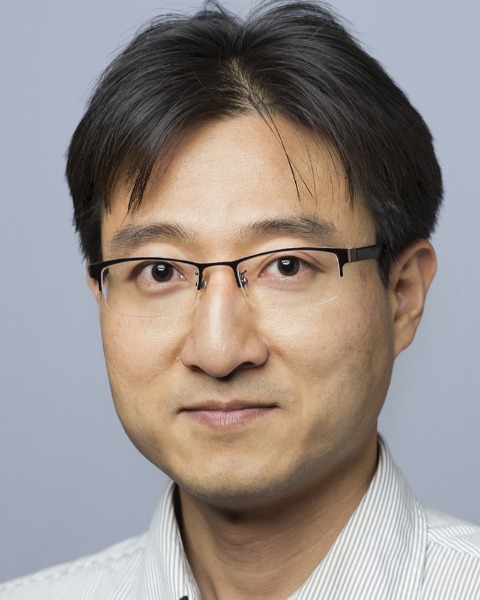Rapid Fire Abstracts
A generalizable trapezoid fitting approach for estimating pulmonary transit time from first-pass perfusion CMR pulse sequence (RF_TH_285)
- LF
Lexiaozi Fan, MSc
PhD Candidate
Northwestern University - MZ
Mingyue Zhao, MSC
graduate student
Northwestern University - LF
Lexiaozi Fan, MSc
PhD Candidate
Northwestern University 
KyungPyo Hong, PhD
Research Assistant Professor
Northwestern University- MD
Maria Davo-Jimenez, MD
Clinal Research Associate
Northwestern University - KC
Kelvin Chow, PhD
MR Collaboration Scientist
Siemens Healthcare Ltd., Canada, Canada - LH
Li-Yueh Hsu, PhD
Researcher
NIH 
Daniel Lee, MD, MSc
Professor of Medicine and Radiology
Northwestern University Feinberg School of Medicine
Northwestern
Dan Kim, PhD
Professor & Associate Vice-Chair for Research (Radiology)
Northwestern University
Northwesern
Presenting Author(s)
Primary Author(s)
Co-Author(s)
Co-Author(s)
Pulmonary transition time (PTT) predicts major cardiovascular events.1 While the traditional PTT measurement, defined as the time interval between the right- to left-sided bolus peaks, is easy to implement, it is sensitive to noise and has low inter-observer reproducibility.2,3 Kellman et al. recently validated a robust method that measures PTT as the centroidal interval of first-pass bolus trajectories between the right and left heart cavity.1 However, this pulse sequence requires an arterial input function (AIF), conversion from signal to gadolinium concentration [Gd], and fitting a gamma variate function (GVF), which may be sensitive to the recirculation peak. The purpose of this study was to develop a generalizable fitting method that is insensitive to the recirculation peak and indifferent to signal modeling type, and to validate its performance against a vendor prototype using GVF fitting.
Methods:
We retrospectively included 70 patients (age = 55±18 yrs, 37 males) with suspected coronary artery disease who underwent a clinical stress CMR at 1.5T (Siemens Avanto) using the prototype SSFP-qPerf sequence.1 25 different patients (age = 51±16 yrs, 16 males) with COVID underwent a research CMR at 1.5T (Siemens Sola) using a radial perfusion sequence,4 which enables both AIF and tissue function (TF) reconstructions from the same radial k-space data. Relevant imaging parameters are summarized in Table 1.
As shown in Figure 1, rather than fitting a GVF to signal- or [Gd]-time curves which may be influenced by the recirculation, we opted to fit a trapezoid with the bases defined at 0.85 and 0.5 relative to the first-pass bolus peak and avoid the recirculation. Our approach is compatible with T1-weighted signal and [Gd] conversion from either the AIF or TF images. For each patient, we 1) manually drew a ROI on the blood cavities after motion correction, 2) selected a median intensity within the ROI, 3) linearly interpolated the temporal resolution of signal intensity and [Gd] curves with a time step=0.01s, and 4) normalized the signal intensities to a range of 0 to 1. In 9 out of 95 TF signal cases where the signal tail (i.e., right lateral side) does not fall below 0.5, we projected from the 0.7 lower cutoff point and linearly extrapolated to 0.5.
For statistical analysis, we conducted the linear regression and Bland-Altman analyses. The results were compared using the appropriate statistical tests, with Bonferroni correction for multiple groups.
Results:
Compared with SSFP-qPerf PTT (8.16±1.95s) derived from AIF [Gd], our PTT derived from TF signal (8.17±1.86s) was not significantly different (P=0.9). As shown in Figure 2, SSFP-qPerf PTT was strongly correlated (R2=0.86) and in good agreement (mean difference = 0.01 [0.08% of mean]; coefficient of variation [CV]=8.95%). For the radial sequence, also shown in Figure 2, PTT derived from four different options (AIF signal, AIF [Gd], TF signal, TF [Gd]) were not significantly different (P=0.72). Using the PTT derived from AIF [Gd] as reference, PTT measures derived from the other three options were strongly correlated (R2≥0.90) and in good agreement (mean difference ranging from 0.01 [0.14% of mean] to 0.46 [5.95% of mean]).
Conclusion:
This study demonstrates that a trapezoid fitting method produces relatively accurate PTT measurements from either the AIF or TF signal or [Gd] time curves. Our simple geometric approach is insensitive to recirculation and indifferent to signal modeling type. Future studies will focus on implementing an automated analysis pipeline.

